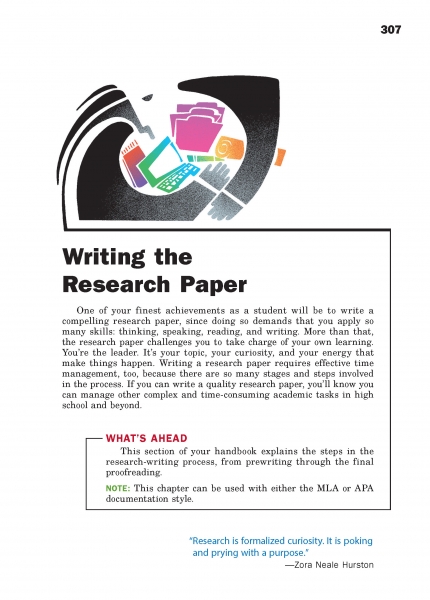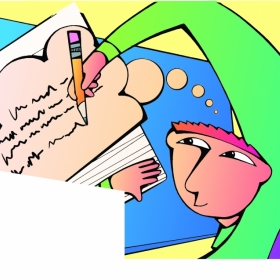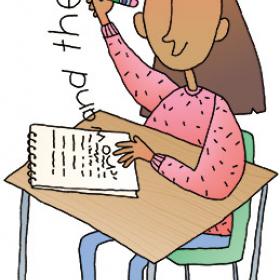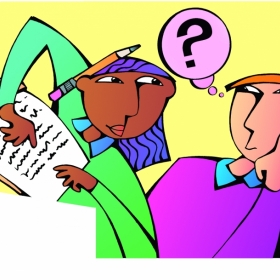Page 307 from

Start-Up Activity
To make sure that students understand the difference between a research paper and a report, share the following writing conference:
Ms. Matthews: Your first draft is interesting, Marco, but it isn’t really a research paper. I would call this a report.
Marco: Research paper—report—what’s the difference? I looked up my topic on Wikipedia, found a book in the library, and wrote down everything there was about the origins of New Orleans jazz music. I wrote the same paper—I mean the same type of paper—last year.
Ms. Matthews: That was fine for a report. But a research paper requires a more active brand of thinking.
Marco: I was sure active. I wrote down a lot of facts.
Ms. Matthews: By “active” I mean intellectually active. In a research paper, you’re no longer an observer, simply telling what others have said about something. You choose a topic that is open for debate. Then you gather information from multiple sources and develop your own position.
Marco: But half the time, they don’t even agree!
Ms. Matthews: Exactly. That’s why you must formulate your own position and develop it as no one has ever done before. You become an authority on your topic. That can be quite satisfying, Marco.
Marco: I get your point.
Admit to students that writing a research paper is complex and challenging, but it becomes a lot easier if they choose a topic that truly interests them—a mystery they wish to solve or a point they've always wanted to prove. This chapter is designed to help students meet the challenge.
Think About It
“Research is formalized curiosity. It is poking and prying with a purpose.”
—Zora Neale Hurston

Start-Up Activity
To make sure that students understand the difference between a research paper and a report, share the following writing conference:
Ms. Matthews: Your first draft is interesting, Marco, but it isn’t really a research paper. I would call this a report.
Marco: Research paper—report—what’s the difference? I looked up my topic on Wikipedia, found a book in the library, and wrote down everything there was about the origins of New Orleans jazz music. I wrote the same paper—I mean the same type of paper—last year.
Ms. Matthews: That was fine for a report. But a research paper requires a more active brand of thinking.
Marco: I was sure active. I wrote down a lot of facts.
Ms. Matthews: By “active” I mean intellectually active. In a research paper, you’re no longer an observer, simply telling what others have said about something. You choose a topic that is open for debate. Then you gather information from multiple sources and develop your own position.
Marco: But half the time, they don’t even agree!
Ms. Matthews: Exactly. That’s why you must formulate your own position and develop it as no one has ever done before. You become an authority on your topic. That can be quite satisfying, Marco.
Marco: I get your point.
Admit to students that writing a research paper is complex and challenging, but it becomes a lot easier if they choose a topic that truly interests them—a mystery they wish to solve or a point they've always wanted to prove. This chapter is designed to help students meet the challenge.
Think About It
“Research is formalized curiosity. It is poking and prying with a purpose.”
—Zora Neale Hurston














